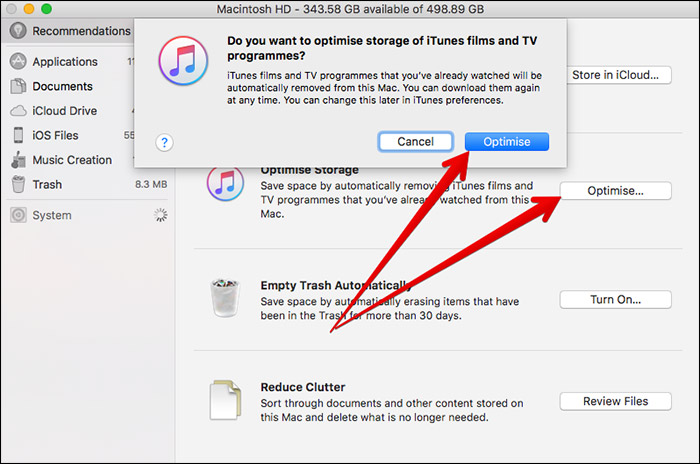

- #How to manage space on mac how to#
- #How to manage space on mac full#
- #How to manage space on mac pro#
- #How to manage space on mac tv#
Note: Recommendations you see vary based on how you’ve set your app and iCloud preferences. You can also select an item and press Control + Delete if you want to delete an item on the spot permanently. This feature automatically erases items in the Trash for more than 30 days. While many of us habitually delete clutter on our desktop, only a few permanently delete items from the Trash, causing it to accumulate. This feature helps you find the largest files, books, movies, apps, and other items that take a considerable space on your drive and allows you to locate where they are stored and manually delete them. It also keeps your recent mail attachments to prevent bulky attachments from cluttering your drive, especially when you need that extra storage space.

This feature helps you save space by automatically removing your purchased shows and movies after you’re done watching them.
#How to manage space on mac tv#
We know how huge videos and TV shows are, especially in HD. When your Mac is low on storage, your Mac keeps only your recently opened files and space-saving versions of your photos to free up as much local space as needed. ICloud is a handy external storage space that helps clear space on your MacBook while ensuring that you can easily access your files using your devices. The feature allows you to store all the files saved on your Desktop and Documents, your Photos, and Messages. Under Recommendations, you’ll see four features: To access them, go to the Apple menu → About This Mac. These features are stored within the storage management window.
#How to manage space on mac how to#
Read along to learn how to free up storage space! How to clear space on MacBook Air or Proīelow are tips to reclaim some of your drive space to make your Mac run faster again.Īpple has a built-in utility that helps you optimize your storage space. However, a simple select-and-delete won’t get you that far.
#How to manage space on mac pro#
Knowing what eats your storage space can give you insight on how to free up space on MacBook Pro or Air. You can hover your cursor over each segment to learn how much space they take up. Here you’ll see a storage bar with segments representing categories of files like Apps, Music, Documents, iOS files, and more. To do this, go to the Apple menu → About This Mac → click the Storage tab. Let’s start with the basics! How to check your Mac’s storage spaceīefore I tell you how to clear space on MacBook Air or MacBook Pro, you should know how much storage is left on your machine and how much you’re currently using. Let me share some quick and easy ways to free up space on Mac without spending a dime.
#How to manage space on mac full#
MacBooks tend to have hard drives become full quickly. This can make Apple’s recent offering of their newer Macs with double to quadruple the storage enticing. Other options include optimizing storage by automatically removing watched movies and TV shows from Apple TV, emptying the bin automatically every 30 days, and reviewing all large documents stored on a Mac.Is your Mac’s storage space running low? If so, you are not alone. Before choosing this option, it's important to make sure that an iCloud+ plan with enough storage has been purchased.

Users can click on Store in iCloud to transfer documents, photos, and messages to the cloud. The Recommendations window will display suggestions on how to quickly free up storage space. Now click on Manage, which will open up the System Information tool, and wait a few minutes while the Mac calculates the storage taken up by various folders. Click on the Storage tab to see how much free storage is available. This can be accessed by clicking on the Apple menu at the top left corner of the screen, and then on About This Mac. The easiest way to check what's taking up space on a Mac is by using Apple's inbuilt storage management tool.
Related: Mac Slowing Down? How To Find Which Apps Are Using The Most Memory


 0 kommentar(er)
0 kommentar(er)
